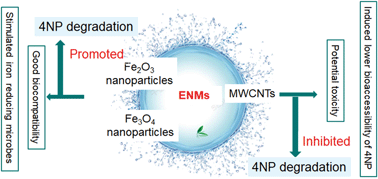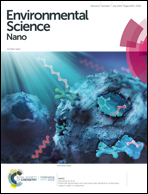Effects of typical engineered nanomaterials on 4-nonylphenol degradation in river sediment: based on bacterial community and function analysis†
Abstract
In this study, we presented a detailed investigation on the effects of typical engineered nanomaterials (ENMs) (including Fe2O3 nanoparticles, Fe3O4 nanoparticles and multi-wall carbon nanotubes (MWCNTs)) on 4-nonylphenol (4NP) degradation based on the diversity and function of bacterial communities in sediments. The results demonstrated that iron oxides promoted 4NP degradation and enzyme activities in sediments, while MWCNTs inhibited these activities. LEfSe analysis suggested that iron oxides incorporation discriminative enriched iron-reducing bacteria including Pantoea, Shewanella and Shewanellaceae contributed to iron reduction and organic degradation. PICRUSt analysis demonstrated that 4NP contamination promoted the expression of genes related to biodegradation, including amino acid metabolism, carbohydrate metabolism, energy metabolism and xenobiotic biodegradation and metabolism. Interestingly, compared to MWCNTs, iron oxide incorporation resulted in enhanced expressions of iron-regulated proteins including ferric uptake regulator (Fur), diphtheria toxin regulator (DtxR), and ferrous iron transport (FeoB) and iron complex transport systems. These results indicate that iron oxides have a better advantage in 4NP degradation; in contrast, the pragmatic evaluation of the prospects of MWCNTs is necessary due to the persistence of 4NP in sediments. This study may be favorable to evaluate secure applications of ENMs in the aquatic environment based on a full understanding of their environmental fate.



 Please wait while we load your content...
Please wait while we load your content...